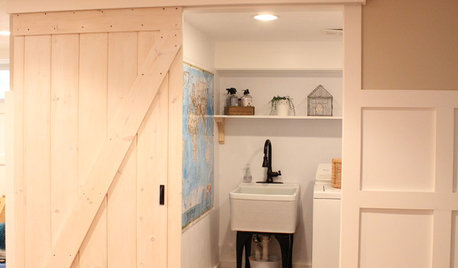Any new front loaders with useful internal heaters?
johnmk
11 years ago
Related Stories

GREAT HOME PROJECTSHow to Switch to a Tankless Water Heater
New project for a new year: Swap your conventional heater for an energy-saving model — and don’t be fooled by misinformation
Full Story
COLORHot Uses for Red Around the House
Spark some excitement from the front door to the back bedroom by bringing in this sultry, sexy color
Full Story
DIY PROJECTSMake Your Own Barn-Style Door — in Any Size You Need
Low ceilings or odd-size doorways are no problem when you fashion a barn door from exterior siding and a closet track
Full Story
HOME OFFICESWorld of Design: 11 International Architects in Their Home Offices
Thinking about relocating your office to your home? From Sydney to Copenhagen, these architects share their insider knowledge
Full Story
GREEN BUILDINGSunlight Used Right: Modern Home Designs That Harness Solar Power
Embracing passive heating principles through their architecture, siting and more, these homes save energy without skimping on warmth
Full Story
TASTEMAKERS‘The Intern’: Nancy Meyers on Bringing Movie Interiors to Life
The director of ‘Something’s Gotta Give’ and ‘It’s Complicated’ dishes on how she creates rooms for her characters
Full Story
INSIDE HOUZZUsing Houzz: Create a Home To-Do List
See how to use an ideabook to keep track of your home projects this year
Full Story
COLORHow to Use Marsala, Pantone’s 2015 Color of the Year
Pantone digs deep and goes earthy with its selection. Here are ways to make it work in your home
Full Story
COLORBest Ways to Use Radiant Orchid, Pantone's Color of 2014
Learn how to work in this bold fuchsia-pink-purple successfully around the home, and give it a yay or nay in the Houzz poll
Full Story
DECORATING GUIDESSpare Room? Lucky You. Here are 12 Fresh Ways to Use It
Imagine all the things you could do in your extra space: painting, planting, playing or nothing at all
Full StoryMore Discussions








herring_maven
johnmkOriginal Author
Related Professionals
South Barrington Kitchen & Bathroom Designers · Rowland Heights Cabinets & Cabinetry · North Plainfield Cabinets & Cabinetry · Ocoee Custom Closet Designers · Town and Country Custom Closet Designers · Ft Washington Custom Closet Designers · West Hollywood Custom Closet Designers · Brushy Creek Flooring Contractors · Elmhurst Flooring Contractors · Fort Lauderdale Flooring Contractors · Knoxville Flooring Contractors · Lebanon Flooring Contractors · Pahrump Flooring Contractors · Seabrook Flooring Contractors · Tigard Flooring Contractorsherring_maven
Cavimum
johnmkOriginal Author
weedmeister
herring_maven
johnmkOriginal Author
johnmkOriginal Author
whirlpool_trainee
johnmkOriginal Author
johnmkOriginal Author
johnmkOriginal Author
buffalotina
whirlpool_trainee
johnmkOriginal Author
whirlpool_trainee
mlhowarth
mamapinky0
Alex Chicago
mlhowarth
rpsinfoman
suburbanmd
rosesr4me